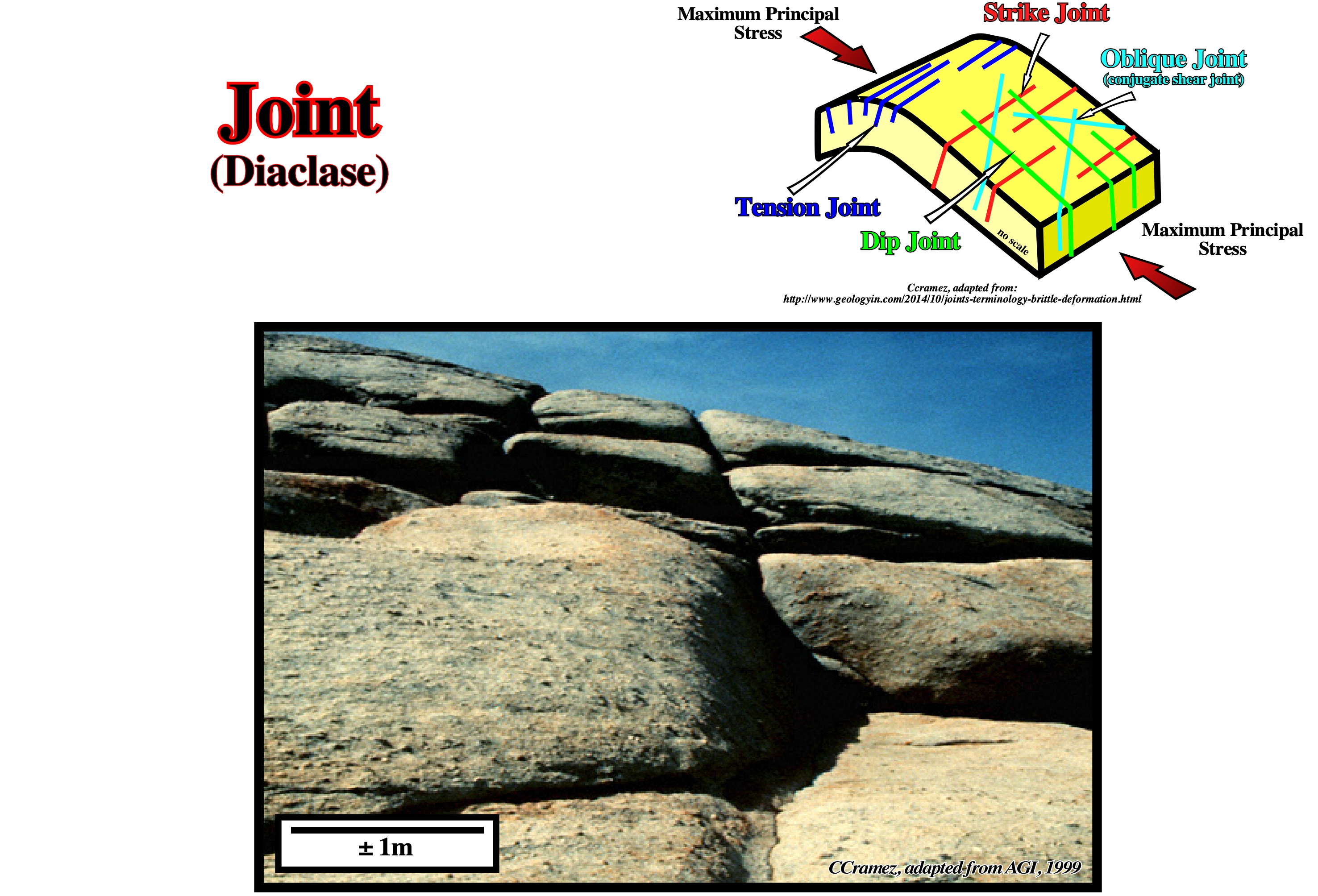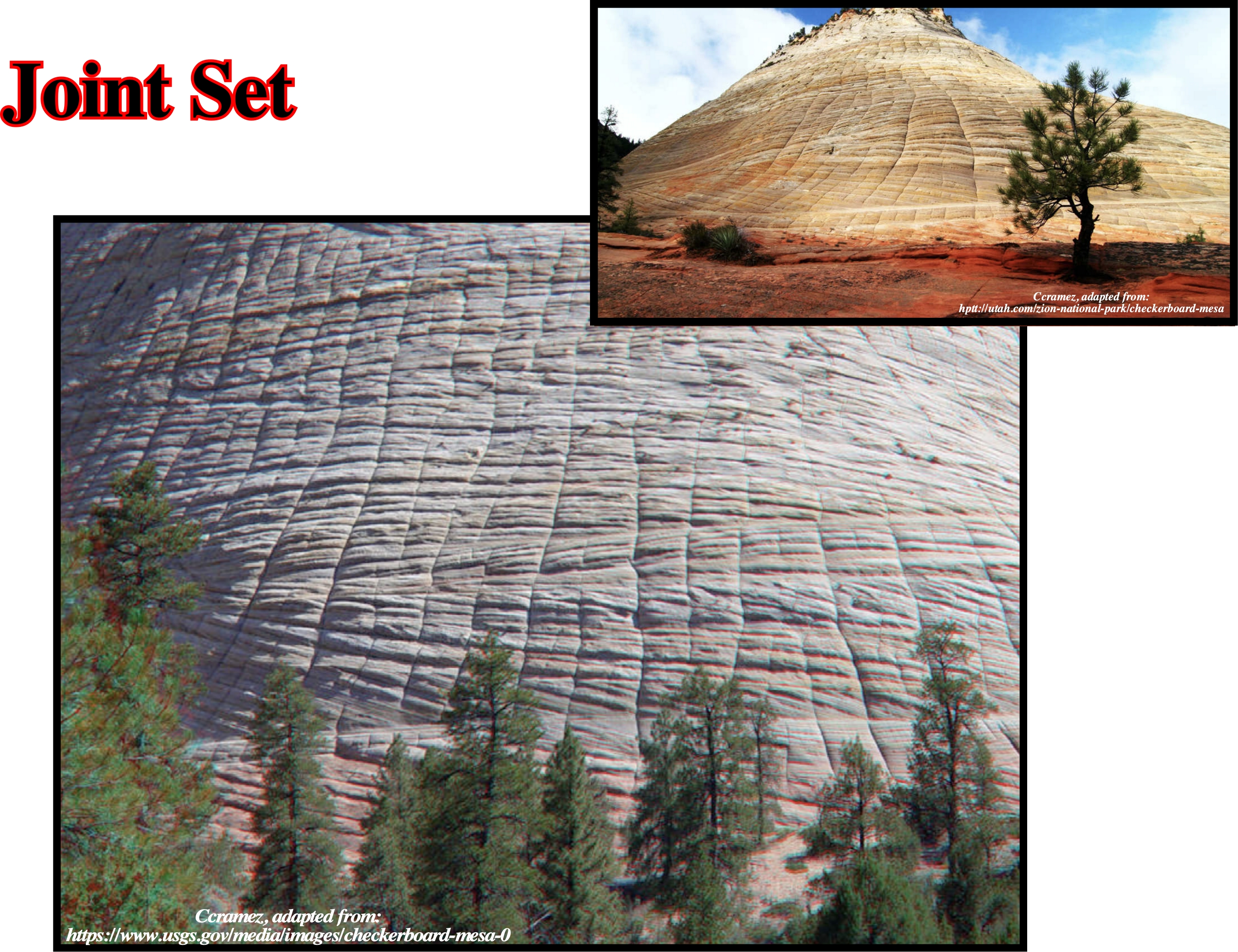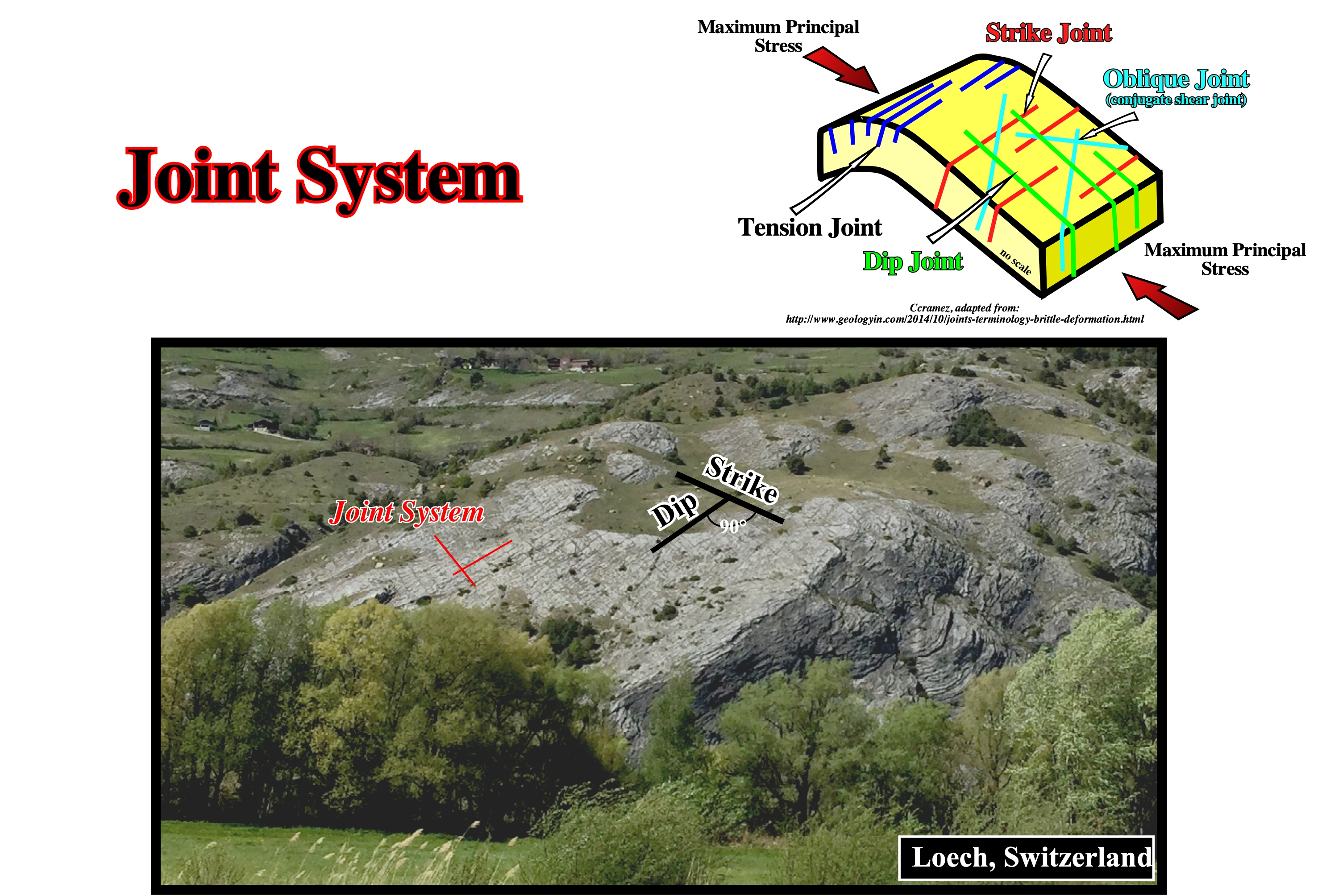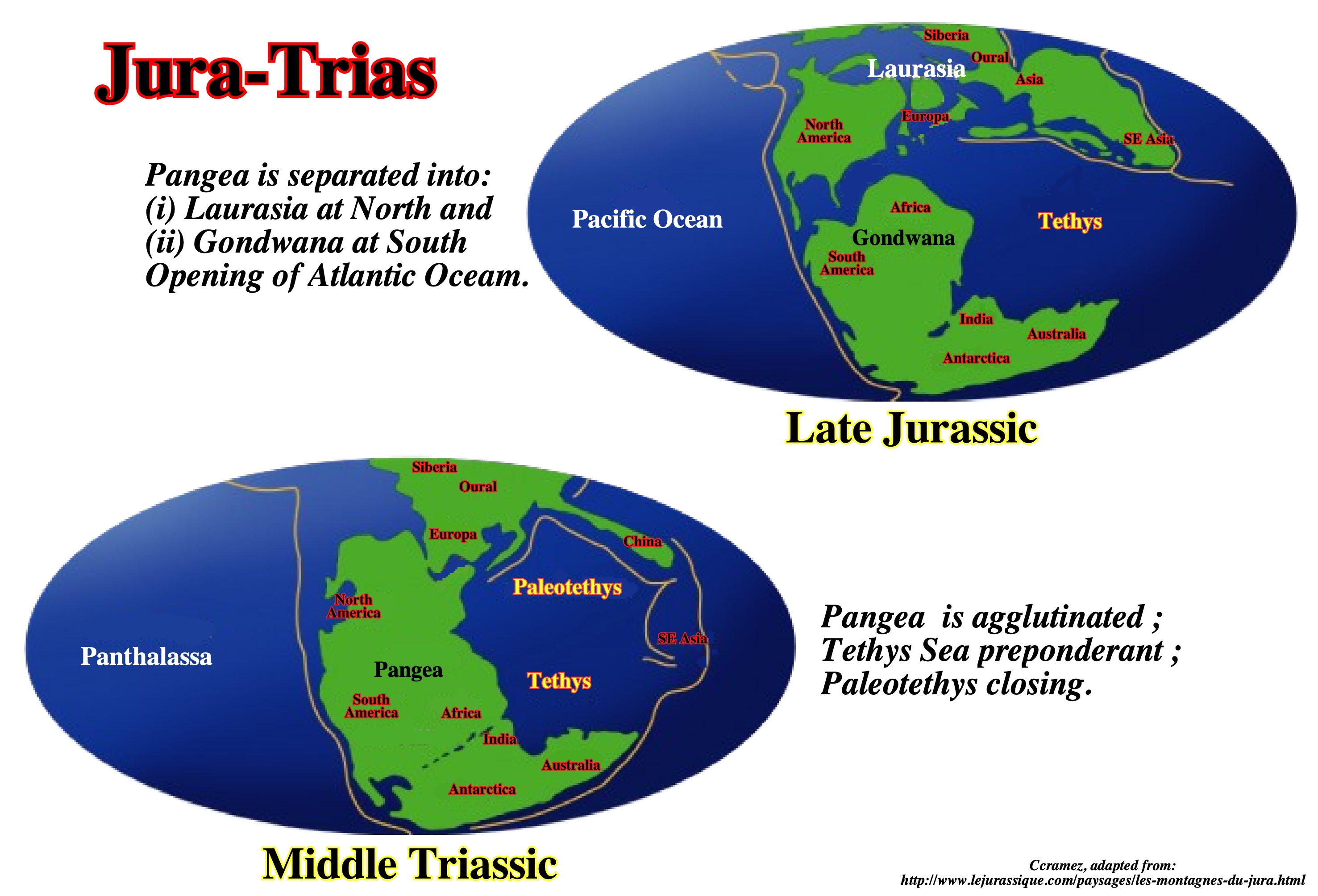

Joint (Bates, R. L. & Jackson J. A., 1980).
A surface of fracture or parting in a rock, without displacement.

A planar fracture, crack, or parting in a rock, without shear displacement. The surface is, usually, decorated with a plumose structure i.e., a ridge like tracing in a plume like pattern, usually, oriented parallel to the upper and lower surfaces of the containing rock unit. Occurs. often, with parallels joints to form part of a joint set.
Joint Set (Bates, R. L. & Jackson J. A., 1980).
A group of more or less parallel joints.

The small photograph (on upper right corner of the figure) of the Checkerboard Mesa, which culminates at 2,033 meters, illustrates Late Triassic to Early Jurassic Navajo sandstones, in Utah (USA). These sandstones are characterized by their white to pink color and by a vertical and more or less parallel joint set. Such a joint set is more than evident on the large photograph, in which geoscientist recognize easily a meter-scale cross-bedding and distinctive rounded weathering. In fact it seems these sandstones were deposited in an arid erg on the Western portion of the Pangea Supercontinent (https://en.wikipedia.org/wiki/Navajo_Sandstone).
Joint System (Bates, R. L. & Jackson J. A., 1980).
Two or more joint sets that intersect. They may be of the same age or of different ages.

On this outcrop in Rhone valley, two perpendicular joint systems are, clearly, recognized on the bedding plane of the Helvetian Nappe rocks. This outcrop is located northward of the Rhone-Simplon fault (near Loech Golf Club), which corresponds to a dextral strike-slipe fault zone, in which the NE block is, also, moving upward (hangingwall) as well. The fault movement seems to be an expression off the NNW movement of the Apulian plate againt the European plate.
Jura-Trias
The Jurassic and Triassic periods combined. A term applied to many American Mesozoic strata, in which the characteristics of the Jurassic and Triassic periods appear to be blended (https://www.definitions.net/definition/JURA-TRIAS)

The Triassic and Jurassic characteristics can be summarized as follows: (A)The extinction that marks the end of the Permian left the biosphere very impoverished, but as all the geoscientists know, the biosphere is very resilient and recovers easily. Two single genera of Ammonia (also called ammonites, an extinct group of Cephalopod molluscs that emerged in the Devonian period) survived the end of the Permian, but 4 My later in the Early Triassic, there were already more than 100 genera. The term Triassic derives from the three parts in which it was divided in Europe: (i) Keuper (the most recent) ; (ii) Muschelkalk and (iii) Bunter (the oldest). Bunter deposits, which consist mainly of red sandstone, clayey and conglomerate, suggest very arid conditions similar to those of the Permian. During Muschelkalk, the Tethys Sea began to advance westward and covered a great part the European platform, where shallow water limestones were deposited, which were covered by dolomites with plaster and anyhdrite, suggesting hyper-saline conditions. The upper part of the Muschelkalk (about 50 meters) is formed by an alternation of marine and lacustrine deposits, some of which have carbonized plant remains. The Keuper is, mainly, formed by an interval of about 450 meters thick, consisting of marls of various colors and porous dolomites, suggesting lagoon conditions. The sea during the Muchelkalk did not invade the Russian platform, but extended to NW, that is, to the area occupied today by the North Sea. Reefs grew up on the southern edge of the European platform, in the shallow waters of northern Tethys Sea, where limestones were deposited that became dolomites and today form the NE mountains of Italy, which are known as the Dolomites. (B) The arid and continental climatic conditions of the Triassic disappeared, rapidly, during the Jurassic period. The hot and humid climate allowed the development of forests, where conifers of persistent leaf, like the Araucariaceae (also known as araucarian), Pinaceae, Podocarpecea, Taxaceae, etc., were dominant, though the Cicada (a superfamily of insect) were also common. Such conditions allowed the large arcosaurus reptiles (crocodiles and dinosaurs) to remain dominant. It was the golden age of the great sauropods: Camarasaurus, Apatosaurus, Diplodocus, Brachiosaurus and many others, which wandered in the different prairies according to their adaptations. They were attacked by the great Theropods, as, for example, the Ceratosaurus, Magalosaurs, Torvosaurs and Allosaurus, that all belonged to the subgroup of the lizards dinosaurs ("saurischian"). During the Late Jurassic, the first birds appeared to appear to have been derived from the small coelurosaurus (carnivorous) dinosaurs. The dinosaurs of the ornithischian group were less prevalent than the saurischian dinosaurs, although some of them, such as Stegosaurus and Ornithopods, played an important role as small to medium-sized herbivores (more small than the Sauropods). Pterosaurus were very common and played the same role that birds currently play in the sky. Marine fish and reptiles were the first vertebrates to appear. Later came the Ichthyosaurus, Plesiosaurus and the marine crocodiles of the Teleosaurids and Metriorhynchinae family. In the world of invertebrates, a number of new groups have appeared, including rudists and belemenites, while many fouling and squeaking communities (sclerobionts) have developed, which has probably boosted the bioerosion of carbonated shells and hardened surfaces. In this period, the icnogenous (trait fossil) Gastrochaenolites is particularly common.